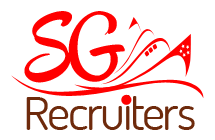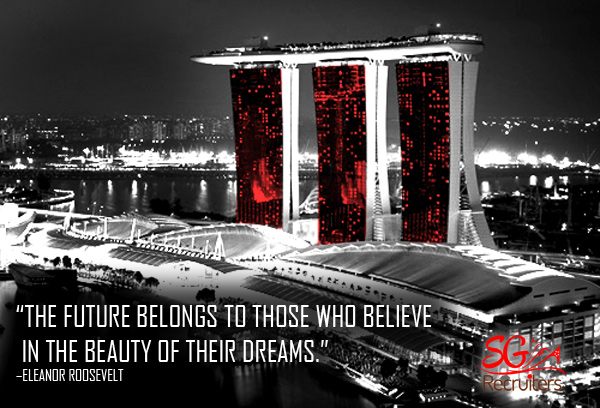Singapore
Singapore, officially the Republic of Singapore, is a Southeast Asian city-state off the southern tip on the Malay Peninsula, 137 kilometres (85 mi) north from the equator. An island country consists of 63 islands, it is separated from Malaysia through the Straits of Johor to its north and from Indonesia’s Riau Islands by the Singapore Strait to its south. The nation is highly urbanised with hardly any primary rainforest remaining, although more land is being created for development through land reclamation.
Singapore had been a part of various local empires since it was initially inhabited in the second century AD. It hosted an investing post of the East India Company in 1819 with permission from the Sultanate of Johor. The British obtained sovereignty on the island in 1824 and Singapore became among the list of British Straits Settlements in 1826. Singapore was occupied by the Japanese in The second world war and reverted to British rule following the war. It became internally self-governing in 1959. Singapore united along with other former British territories to form Malaysia in 1963 and became a completely independent state 24 months later after separation from Malaysia. Ever since then it has had a massive increase in wealth, and is among the list of Four Asian Tigers. The economy heavily depends on the industry and service sectors. Singapore is often a world leader in numerous areas, it’s the world’s fourth leading financial centre, our planet’s second biggest casino gambling market, by far the top three oil refining centre. The main harbour of Singapore is amongst the five busiest ports in the world. The country hosts more US dollar millionaire households per capita than any other country. The World Bank notes Singapore as being the easiest place in the world to do business.
Singapore is a parliamentary republic with a Westminster system of unicameral parliamentary government. The People’s Action Party (PAP) has won every election ever since the British grant of internal self-government in 1959. The legal system of Singapore has its foundations in the English common law system, but modifications have already been made to it throughout the years, such as the removal of trial by jury. The PAP’s popular image is the one about a strong, experienced and highly qualified government, backed with a skilled Civil Service as well as an education system having an emphasis on achievement and meritocracy; however it is perceived by some voters, opposition critics and international observers as being authoritarian and too restrictive on individual freedom.
Some 5 million people are now living in Singapore, of whom 2.91 million were born locally. The majority are of Chinese, Malay or Indian descent. There are actually four official languages: English, Chinese, Malay and Tamil. One of the five founding members of the Association of South East Asian Nations, Singapore also hosts the APEC Secretariat, and is an associate from the East Asia Summit, the Non-Aligned Movement, and the Commonwealth.
Etymology
The English name of Singapore hails from the Malay Singapura, hence the customary hitting the ground with the nation as the Lion City. Lions probably never lived there; the beast seen by Sang Nila Utama, founding father of ancient Singapore, who gave the location its name, was most likely a tiger.
History
The first known settlement on Singapore was in the 2nd century AD. It was an outpost in the Sumatran Srivijaya empire, named Temasek (‘sea town’). Between the 16th and early 19th centuries, it had been part of the Sultanate of Johor. In 1613, Portuguese raiders burnt down the settlement plus the island sank into obscurity for the next two centuries.
In 1819, Thomas Stamford Raffles arrived and signed a treaty with Sultan Hussein Shah on behalf of the British East India Company to develop the southern part of Singapore as a British trading post. In 1824 the entire island became an english possession under a further treaty whereby the sultan as well as the Temenggong transferred it towards British East India Company. In 1826 it became part of the Straits Settlements, an english colony. Before Raffles arrived, there initially were around 1,000 people residing in Singapore, mostly Malays and some dozen Chinese. By 1869, due to migration from Malaya and other parts of Asia, 100,000 people lived on the island.
During The second world war the Imperial Japanese Army invaded Malaya culminating in the Battle of Singapore. The British were defeated, and surrendered on 15 February 1942. British Prime Minister Winston Churchill called this “the worst disaster and largest capitulation in British history”. Japan occupied Singapore up until the British repossessed it in September 1945 after the Japanese surrender.
Singapore’s first general election in 1955 was won by the pro-independence David Marshall, leader from the Labour Front. Demanding complete self-rule he led a delegation to London but was rejected by way of the British. He resigned when he returned and was replaced by Lim Yew Hock, whose policies convinced Britain to grant Singapore full internal self-government for all matters except defence and foreign affairs.
In elections in May 1959 the People’s Action Party won a landslide victory. Singapore had become an internally self-governing state inside the Commonwealth, with Lee Kuan Yew as the first Prime Minister. Governor Sir William Allmond Codrington Goode served as the first Yang di-Pertuan Negara, and was succeeded by Yusof bin Ishak who in 1965 became the first President of Singapore.
Singapore declared independence from Britain on 31 August 1963 before joining the modern Federation of Malaysia in September along with Malaya, Sabah and Sarawak because of the 1962 Merger Referendum. Tunku Abdul Rahman separated Singapore with the Federation two years later after heated ideological conflict involving the ruling parties of Malaya and Singapore.
Singapore gained sovereignty as the Republic of Singapore (remaining within the Commonwealth) on 9 August 1965 with Yusof bin Ishak as president and Lee Kuan Yew as prime minister. In 1967 it helped found the Association of Southeast Asian Nations and in 1970 it joined the Non-aligned movement. In 1990 Goh Chok Tong succeeded Lee as prime minister. During his tenure the country faced the 1997 Asian Economic crisis, the 2003 SARS outbreak and terrorist threats resulting from Jemaah Islamiyah. In 2004, Lee Hsien Loong, the eldest son of Lee Kuan Yew, took over as country’s third prime minister.
Government and Politics
Singapore is actually a parliamentary republic having a Westminster system of unicameral parliamentary government representing constituencies. Its constitution establishes representative democracy as its political system. Freedom House ranks Singapore as “partly free” in its Freedom in the World report, as well as Economist ranks Singapore as a “hybrid regime”, the third rank from four, in their “Democracy Index”. Singapore is consistently rated one of the least corrupt countries in the world by Transparency International.
Executive power rests with the Cabinet, led by the Prime Minister, along with the President. The president is elected through popular vote, and has some veto powers for a couple key decisions for example the use of the national reserves and the appointment of judges, but otherwise occupies a ceremonial post.
The Parliament serves as the legislative branch of government. People in Parliament consist of elected, non-constituency and nominated members. Elected MPs are voted into parliament on a “first-past-the-post” (plurality) basis and represent either single-member or group-representation constituencies. The People’s Action Party has won control of Parliament with large majorities in each and every election since self-governance was secured in 1959. However, in the latest parliamentary elections in 2011, the opposition, led by the Workers’ Party, made significant gains and increased its representation in the House to six elected MPs.
The legal system of Singapore is founded on English common law, albeit with substantial local differences. Trial by jury was entirely abolished in 1970 leaving judicial assessment performed wholly by judgeship. Singapore has penalties that include judicial corporal punishment by using caning for rape, rioting, vandalism, and some immigration offences. There exists a mandatory death penalty for murder, and for certain drug-trafficking and firearms offences. Amnesty International reports that some legal provisions conflict with the right to be presumed innocent until proven guilty, which Singapore has “possibly the highest execution rate in the world in accordance with its population”. The government has disputed Amnesty’s claims. Inside a 2008 survey, international business executives believed Singapore, along with Hong Kong, had the best judicial system in Asia.
Geography
Singapore is made up of 63 islands, including the main island, widely known as Singapore Island but also as Pulau Ujong. There are two man-made connections to Johor, Malaysia: the Johor to Singapore Causeway in the north, and the Tuas Second Link in the west. Jurong Island, Pulau Tekong, Pulau Ubin and Sentosa are classified as the largest of Singapore’s smaller islands. The highest natural point is Bukit Timah Hill at 166 m (545 ft).There are ongoing land reclamation projects, that have increased Singapore’s land area from 581.5 km2 (224.5 sq mi) in the 1960s to 704 km2 (272 sq mi) today; it may grow by another 100 km2 (40 sq mi) by 2030. Some projects involve merging smaller islands through land reclamation to form larger, more functional islands, similar to Jurong Island. About 23% of Singapore’s land area is made up of forest and nature reserves. Urbanisation has eliminated most primary rainforest, with Bukit Timah Nature Reserve the sole significant remaining forest.
Singapore has a tropical rainforest climate with no distinctive seasons, uniform temperature and pressure, high humidity, and abundant rainfall. Temperatures usually vary from 23 to 32 °C (73 to 90 °F). Relative humidity averages around 79% in the morning and 73% in the afternoon. April and May are the hottest months, with the wetter monsoon season from November to January. From July to October, there is often haze attributable to bush fires in neighbouring Indonesia. Although Singapore does not observe daylight saving time, it follows time zone GMT+8, one hour ahead of its geographical location.
Singapore,
